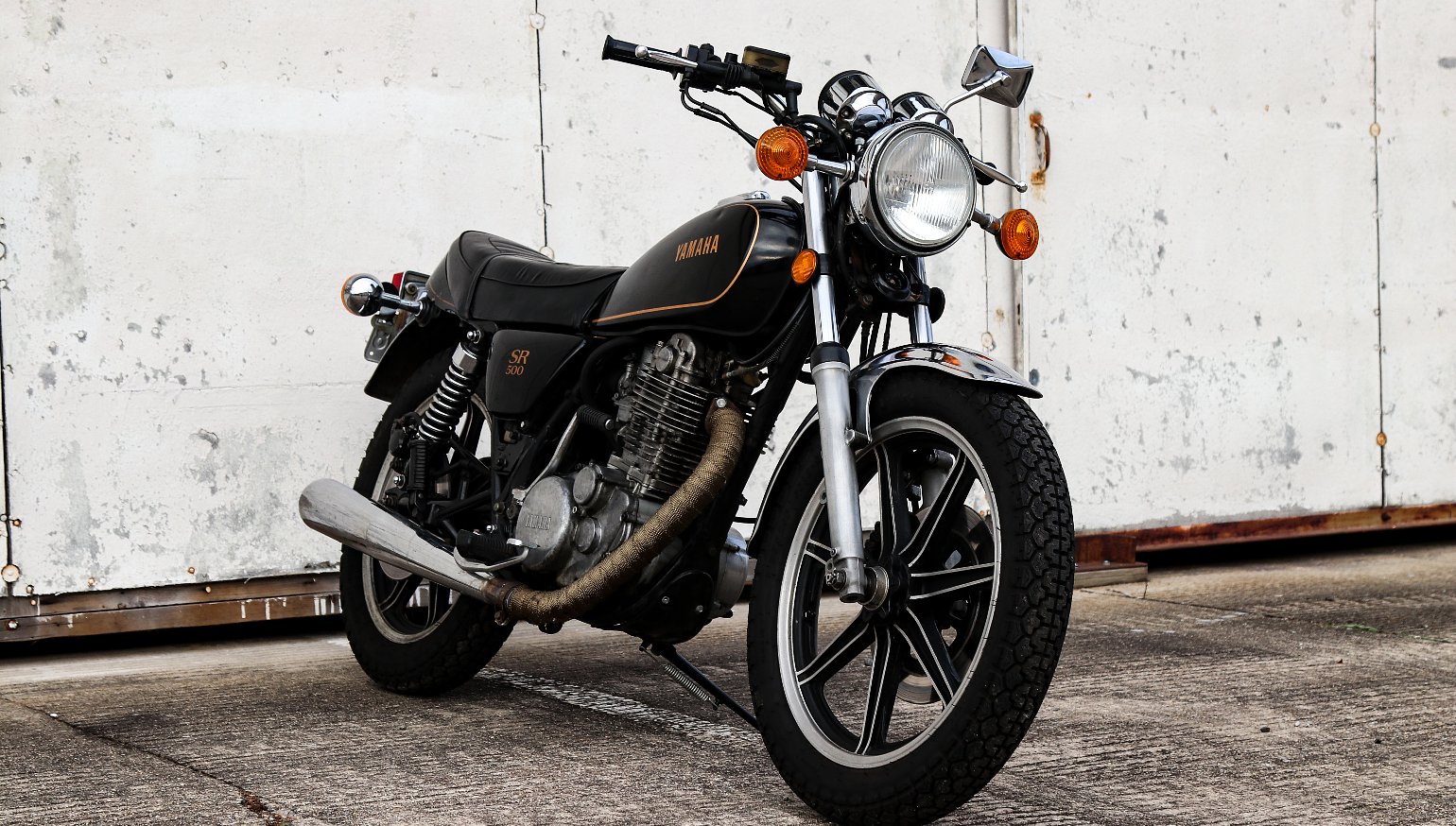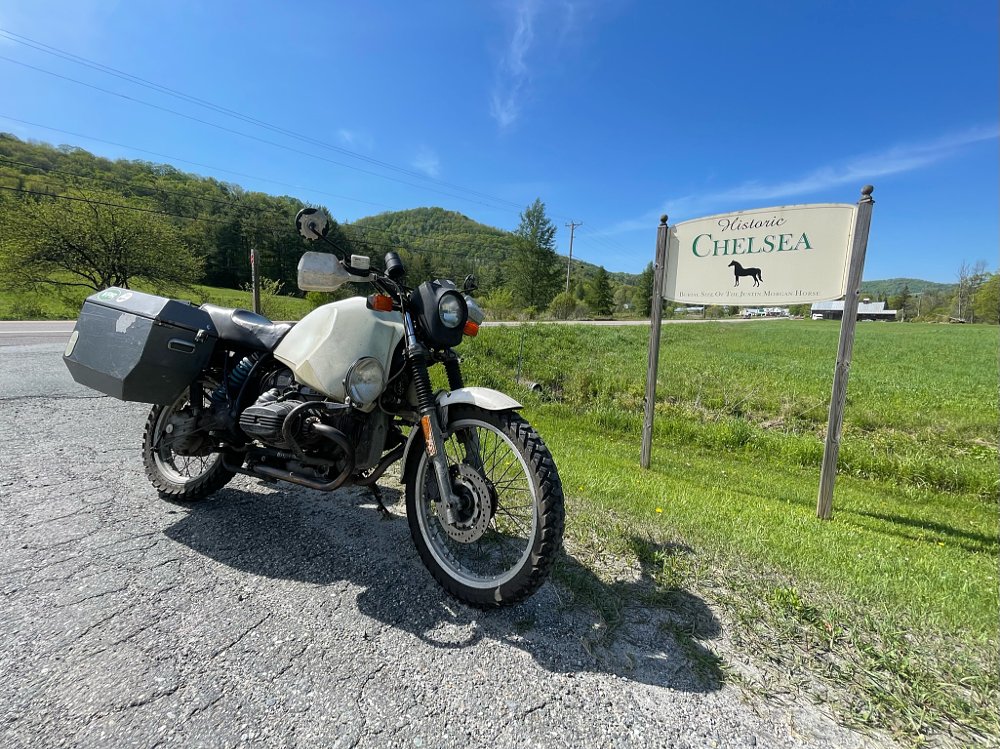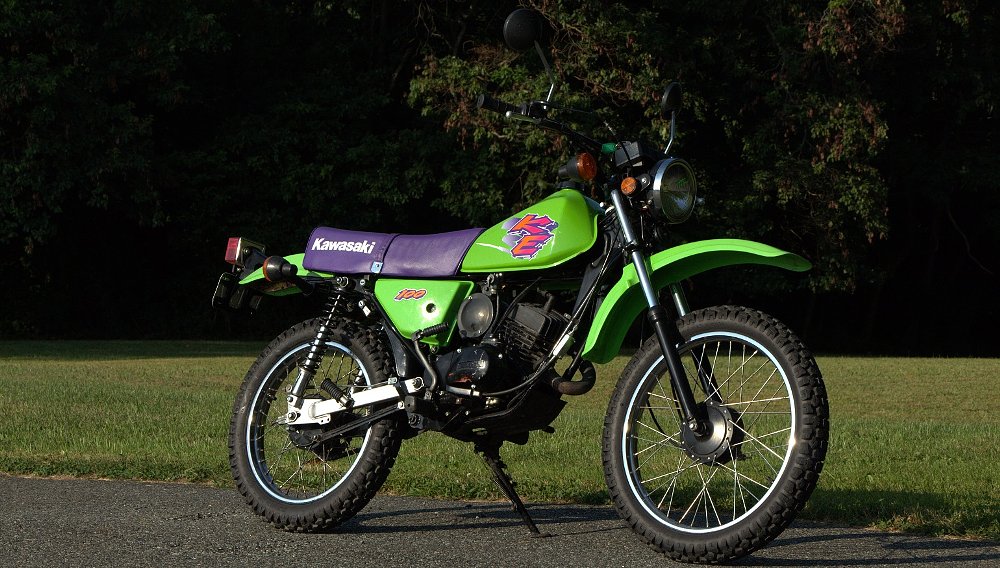In 1978, Yamaha rolled out an unlikely motorcycle that would go on to become a cult classic.
The SR500 was a kick-only, 499 cc thumper for the road. In some ways, the SR was a throwback to legendary motorcycles from BSA, Matchless, Velocette, Norton, and Triumph. It was arguably the last call for the golden-era British single formula, even though it was designed and built by a Japanese manufacturer. In other ways, the SR500 was a precursor to future trends in motorcycling: the rise of the supermotard, the return of the café racer craze, and the growing disinterest in large, street-only singles among riders in the United States, where it lasted just a few years.
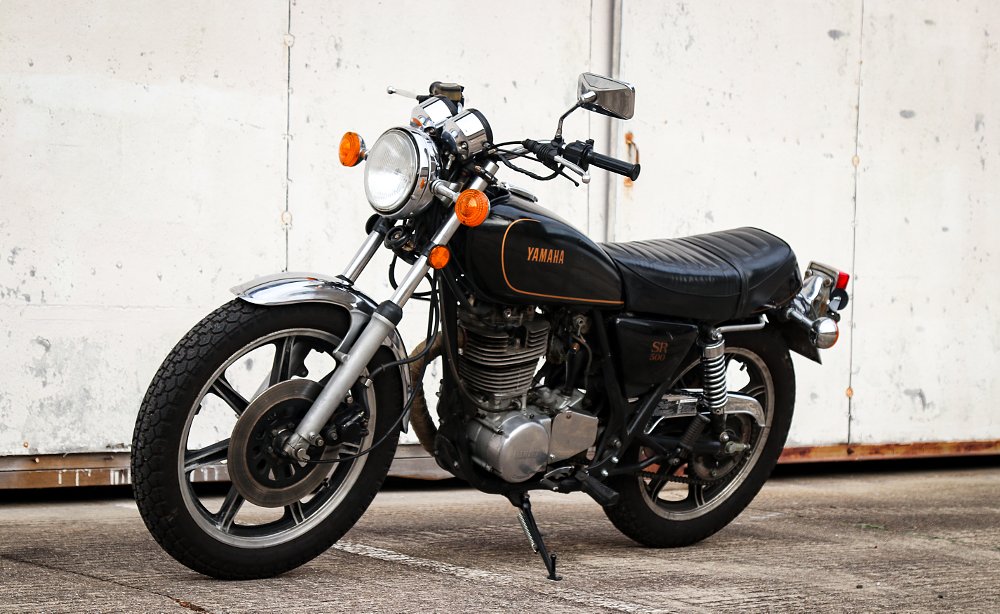
The story goes a little differently in places like Europe and Japan, where SRs were much more popular. The Yamaha SR500 was still in production as late as 1999, and its smaller sibling, the SR400, hung around from 1978 to last year. The U.S. had two notable SR resurgences with the 21st century café racer revival and the introduction of the SR400 to its market in 2014, but neither pushed Yamaha’s thumper into mainstream motorcycling. These bikes were, and still are, an acquired taste. I doubt anybody “just happens” to buy an SR.
This example is a 1979 U.S.-market SR500 with disc brakes and cast wheels. Other versions had spoke wheels and rear drum brakes. It’s a relatively complete and stock bike that just passed 32,000 miles on the clock. All of its owners over the last 43 years have been SR nuts (including me!) because… well, that’s just the way it goes with these bikes.
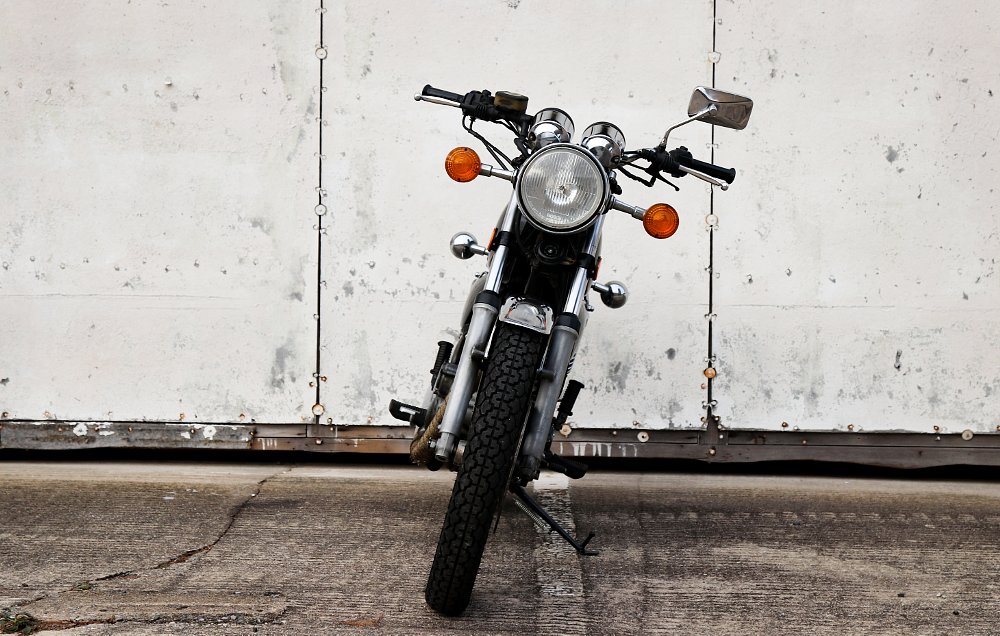
SR500 origins and performance
The story of the SR starts with the XT500 and TT500 off-roaders. In the early 1970s, Yamaha developed four-stroke, half-liter singles to excel in the dirt, and fistfuls of Dakar trophies proved the platform’s potential and durability. Meanwhile, Yamaha’s four-stroke street bike lineup was suffering after issues with the TX750s and TX500s. Yamaha wanted a new middleweight street bike to help restore its reputation, so the successful dirt design was adapted for street riding. The SR was also a response to riders asking for new motorcycles that were more like bikes “from the good old days” — simple, light, and torquey, unlike those newfangled four-cylinders that were taking the world by storm. So Yamaha delivered.
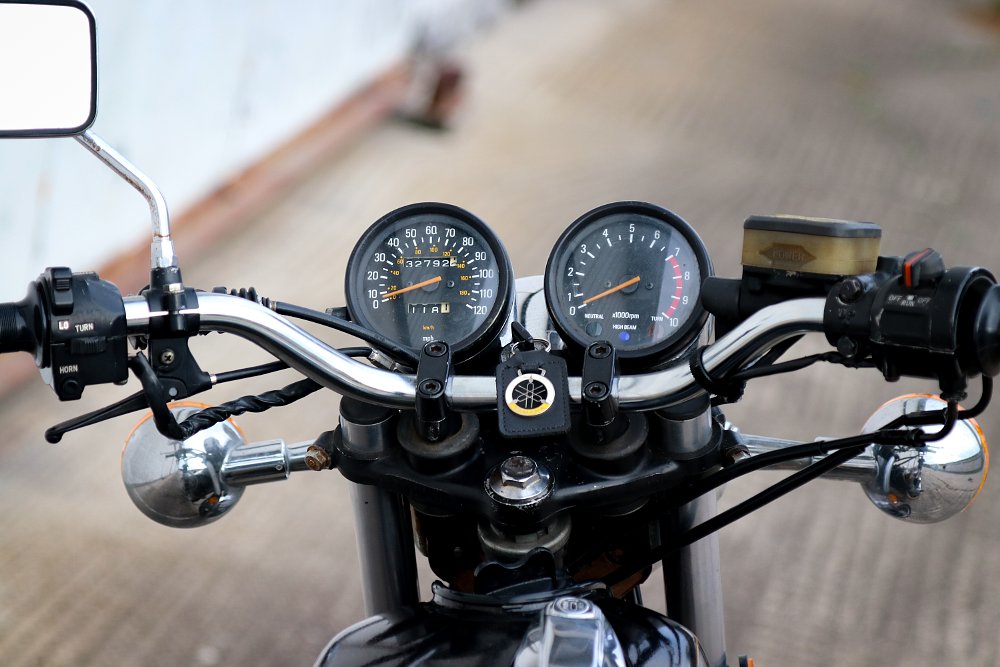
The motorcycling press had lots of praise for the new SR500. The bike had clean, classic lines and good power with a top speed of around 90 miles per hour. Sure, it vibrated like an old motorcycle and lacked the comfort and performance of a multi-cylinder 500, but the wheels and brakes were very decent for their day, and the engine was reliable and oil-tight. U.S. customers weren’t so impressed. A street bike with only a kickstarter was a dinosaur by 1978. Many SRs, like this one, were sold for rock-bottom prices in the early 1980s as dealer leftovers.
The air-cooled single makes a claimed 31 horsepower at 6,500 rpm and 26 foot-pounds of torque at 5,500 rpm. Redline is seven grand, not bad for a two-valve thumper with a single cam and no counterbalancer. Bore and stroke measure 87 mm by 84 mm. The engine shudders and lopes at low revs, as you’d expect. Beyond 3,500 rpm, the engine smooths out nicely with a fat spread of torque to play with. Power is fed to the five-speed transmission through a stout clutch. A hallmark of the SR design is the dry-sump oil system that uses the frame as both an oil reservoir and an oil cooler. The engine and frame are slightly different from those found on the SR’s dirty cousins. The frame was gusseted and bulked up for the street, and the engine features a longer piston skirt above a revised crank, among other changes.
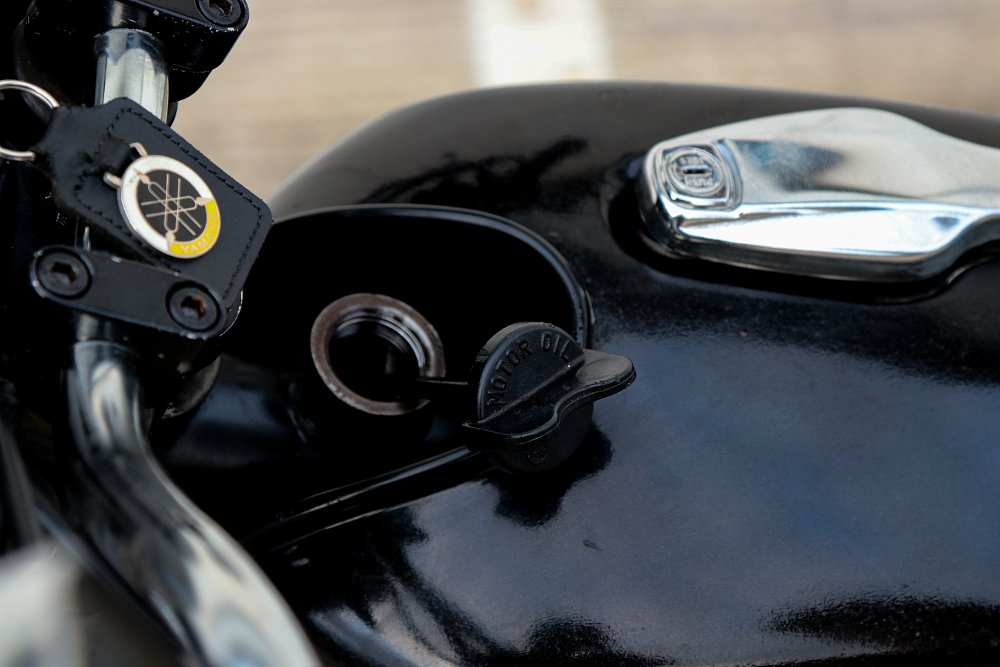
I called the SR500 a precursor to the supermoto at the top of the article, and I should explain that a little bit. The essential sumo recipe is a dirt engine and frame with street suspension, wheels, and brakes, plus whatever gearing and tuning is required for best performance. The SR is a little too porky and classical to be called a proper supermoto, but it pioneered the idea of converting a dirt bike for street duty at the factory. Disc brakes and mags were the hot ticket for street performance in '78, and good sport rubber was readily available in the SR's wheel sizes.
Starting a Yamaha SR500
There’s Yamaha’s method for starting an SR, and the one I use. Here’s the official sequence from the folks who built it: turn on the choke, pull the decompression lever, rotate the engine with the kickstarter until a silver tab appears in the kick indicator window, and then release the decompression lever. Give a strong kick, removing your foot from the kickstarter as soon as it bottoms out.
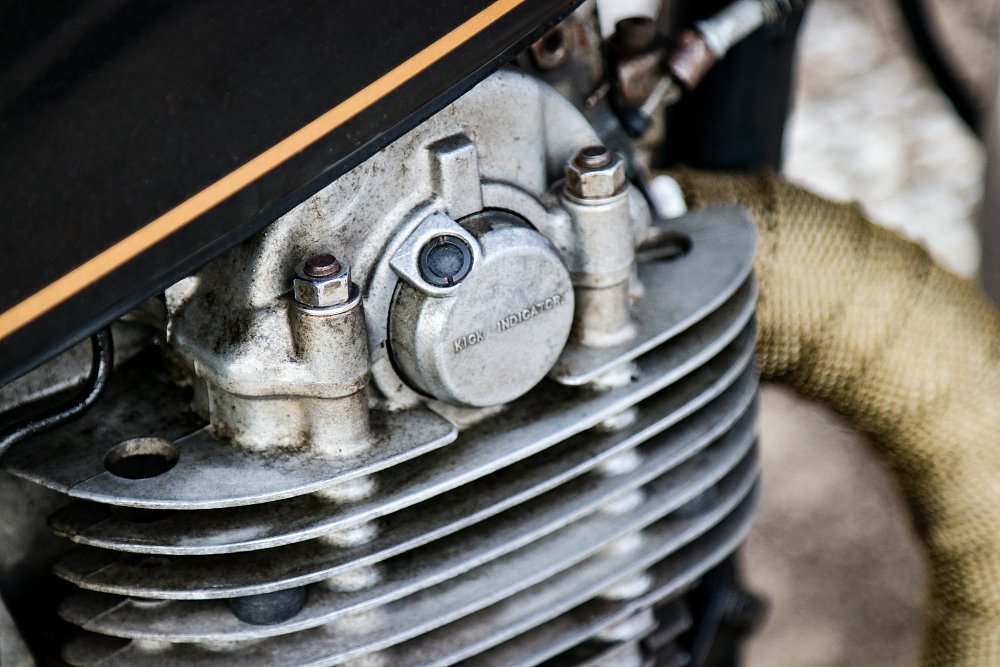
I know I’m not the only owner who uses an abbreviated version of Yamaha’s method, but when it comes to SRs, reliable starting is the only measure that matters. Here’s what always works for me: Set the choke to half, at most. Skip the decomp lever, rotate the engine until you feel the resistance of top dead center, and make sure the kickstart ratchet is grabbing at the very top kicker position. Do not touch the throttle. Give a solid kick, removing your foot from the kickstarter as soon as it bottoms out, and ease the choke off as quickly as you can.
The example in this article is a one-kick bike, so don’t let the lack of electric start scare you away from an SR if you are physically able to use the kickstarter. I don’t mean to say this is a real He-Man's motorcycle. It's just that a bad knee, bad back, bad ankle, etc. could make this bike a literal non-starter for some riders.
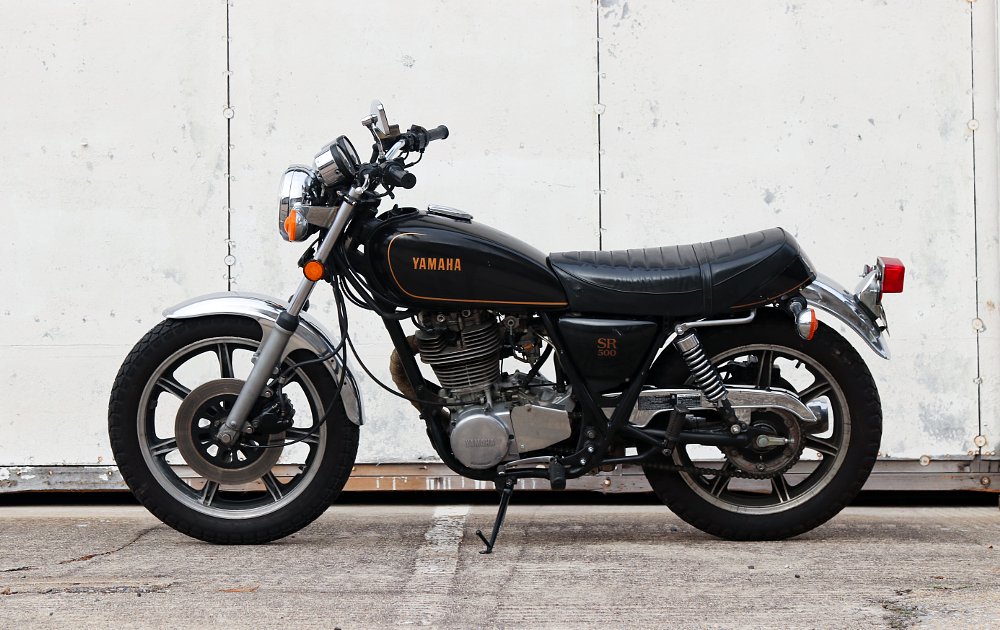
Riding Yamaha's big single
The SR500 isn’t a fast motorcycle by modern standards. Heck, it wasn’t all that fast when it was new. It sure is engaging, though. Weighing under 350 pounds and carrying only the bare essentials, an SR is best ridden on a winding back road with tight turns. Light like a 250, grunty like a big dual sport. With the right rider and tires, it can embarrass much larger motorcycles. These bikes are popular choices in various vintage racing organizations, and quite a few have been converted for flat-track duty, as well. And when the café racer revival came around, SR500s were among the first bikes that customizers sought out for builds. The handling is superb for its class and era. An SR with good suspension feels flickable, pure, and steady. Take one for a ride if you ever get the chance.
For beginners and gentle riders, the SR is friendly and easy to ride at low revs. You can putter around town or your favorite back lane while sipping fuel at 60 miles per gallon or better. With a cargo rack or some luggage, it’s ideal for running errands around town. A hot start button helps preset the throttle when making frequent stops and starts. The suspension on most SR500s will be clapped out by now. With a fork servicing and maybe a new set of rear shocks, these bikes should be able to haul you around in relative comfort. Aftermarket support is expansive, and there are plenty of products out there that will sharpen up the suspenders if you’d like. Also, quite a few parts are interchangeable between old SR500s and newer SR400s if replacement bits are needed.
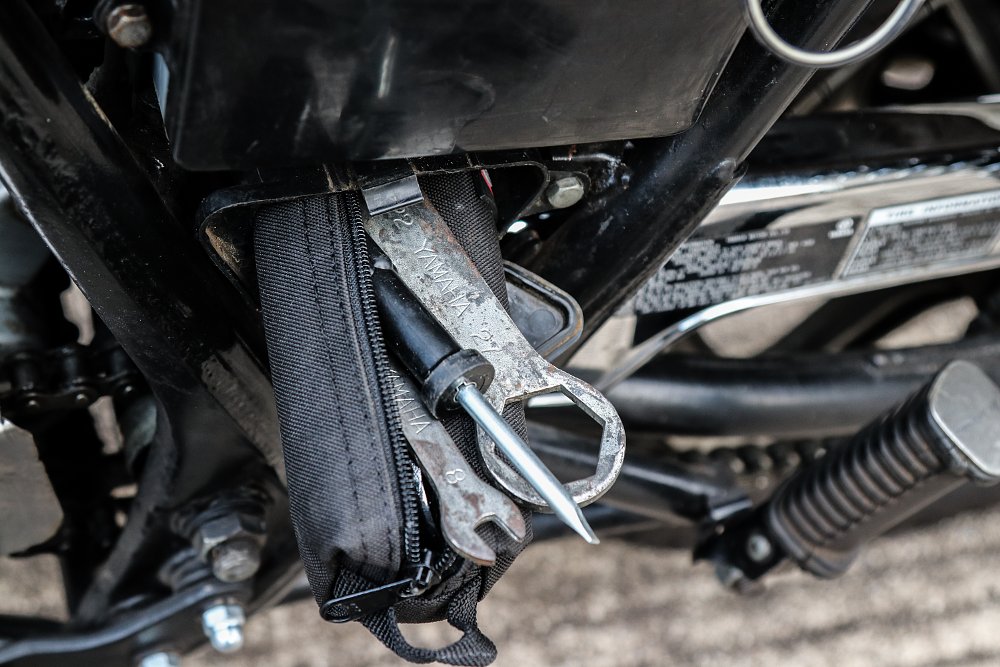
The riding position is upright and relaxed with a tidy seat. Fat rubber foot pegs attempt to isolate some of the vibrations. This example is wearing a Euro-style handlebar that places a bit more of my weight towards the front wheel.
There is absolutely nothing special about any of the instruments or controls. Due to the shaking at most speeds, mirrors are really only used to see if there are headlights behind the rider. A lockable compartment under the left side cover holds a small tool kit and a little case for documents.
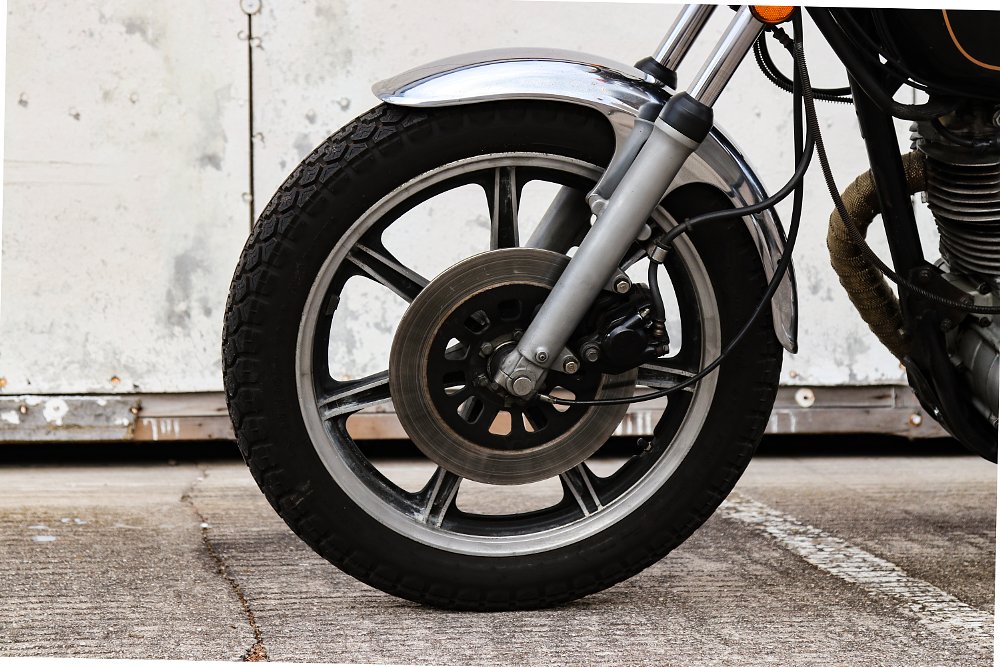
The front disc brake is simple and capable, much like the rest of the motorcycle. The primitive caliper can lock the front wheel with a firm squeeze. An unfortunate side effect of the skinny fork tubes and single disc is the tendency to twist the front end under hard braking. The rear disc is overkill. Most SRs used a drum rear.
Whacking the throttle open on an SR won’t rip your arms off with only 30-odd horsepower on tap at best. That’s not the point of this motorcycle. WOT will, however, spur the One Big Piston into action, and by the time you’ve let the clutch out, it’s almost time to upshift again. Correct gear choice is key to getting the most out of your SR. There isn’t enough top-end power to strafe corners with too low of a gear. Chugging through too tall of a gear isn’t ideal, either. You’ll have to keep your left foot busy to enjoy the best of the SR because it’s all about the midrange grunt of this engine. It’ll impress you if you can understand its needs and limitations.
Of course, there's always room for improvement. I wish the stock fork was less flexible when ridden hard. The rear shocks don't hold up well, and you'll pay a pretty penny for quality aftermarket replacements. In the maintenance department, the owner's manual recommends valve adjustments and oil changes every 2,000 miles, which nobody does. Need some new tires? The alloy wheels mar easily, and you still have to use tubes. One last gripe is the price of parts in general. I don't know why SR stuff tends to cost more than similar parts for other Japanese bikes, but at least you can always find whatever you need.
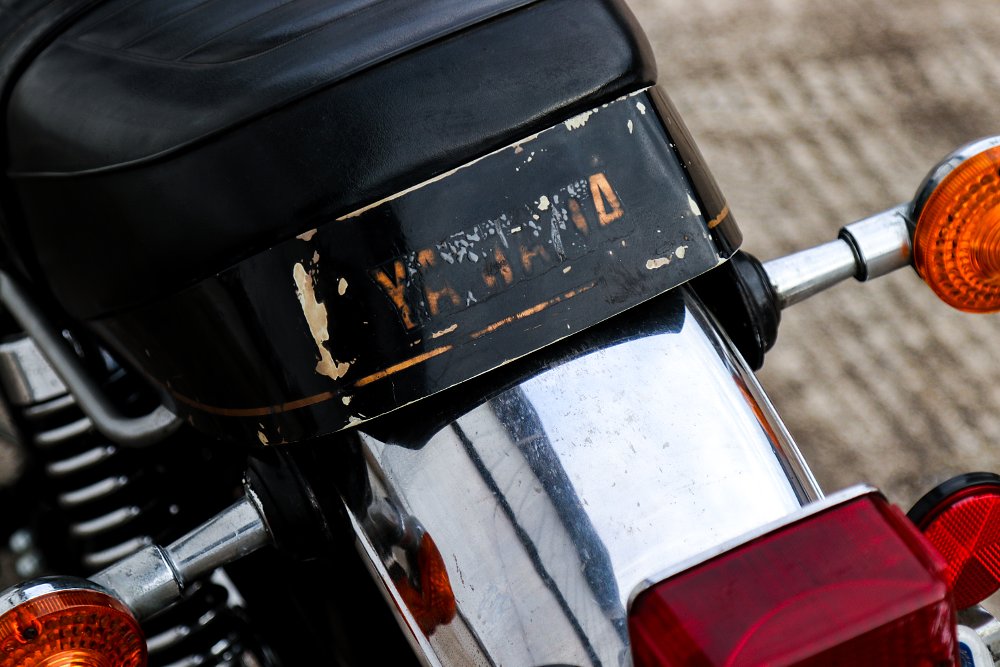
If I had to nail down the appeal of the Yamaha SR, I think it’s just a satisfying motorcycle to own and ride. From starting it with a practiced kick, to hustling up a mountain road, the SR rewards whatever effort you put into it. If the rider is not lazy, the bike will not be lazy, either. It’s easy to work on, easy to customize, and still somewhat affordable to own, although both 500s and the newer 400s hold their value well.
The SR makes everyday trips and errands enjoyable because it isn't fussy or complicated. You've gotta have confidence, though. Experienced owners say that these bikes can smell fear when using the kickstarter. Kick like you believe it'll start, and it'll start, especially when other people are watching. Kick like ya mean it, and peel out!
What to look for when buying a Yamaha SR500
SRs are not terribly complicated, but there are a few things to check when buying one. Do a compression test to see how the top end is holding up. The rocker oiling path on early SRs wasn’t all that great for the exhaust valve, and a dual oil feed line is one of the most popular SR modifications out there for valvetrain longevity. It’s not uncommon to see other mods like Mikuni roundslide carbs, pod filters, battery eliminators, Supertrapp exhausts, and big bore kits. Stock header pipes are prone to rusting out and cracking; there are lots of aftermarket replacements available. (Or you can throw some pipe wrap on it like I did while saving up for a replacement.)
Check for excess play in the swingarm pivots, track down any oil leaks, and check those steering and wheel bearings that are probably starving for grease. It might be a good idea to pull the right side engine cover to make sure that the kickstart stop tab hasn’t broken off, and you might have to pull that cover anyway to repair the thread for the bottom bolt of the oil filter cover, which is often stripped. Most of these issues do not apply to the newer SR400 with fuel injection and a revised oiling path that does a better job of cooling the exhaust valve.
Yamaha SR: A motorcycle from a simpler time
Even when it was new, Yamaha’s SR500 was a retro bike at heart. Standard. Nothing fancy. It’s a motorcycle pared down to just the essentials, and for a lot of riders, that was just too far. Their criticisms are understandable. Who would willingly ride a kick-only street bike in 2022… or even 1978? Why not buy a smoother, faster twin or four? Don’t you want more power and more features? Just get a Bonneville and be done with it.
While the industry moved on, the SR charmed enough riders to stay in production for decades after its competitors, and I’d bet that Yamaha never intended for it to last as long as it did. It’s the KitchenAid mixer of motorcycles, frozen in time and virtually impossible to break beyond repair. Yamaha SRs will be thumping around until the last drop of gasoline is pumped, and there will probably be a forum post a week later showing how to run one on homebrew biofuel.




